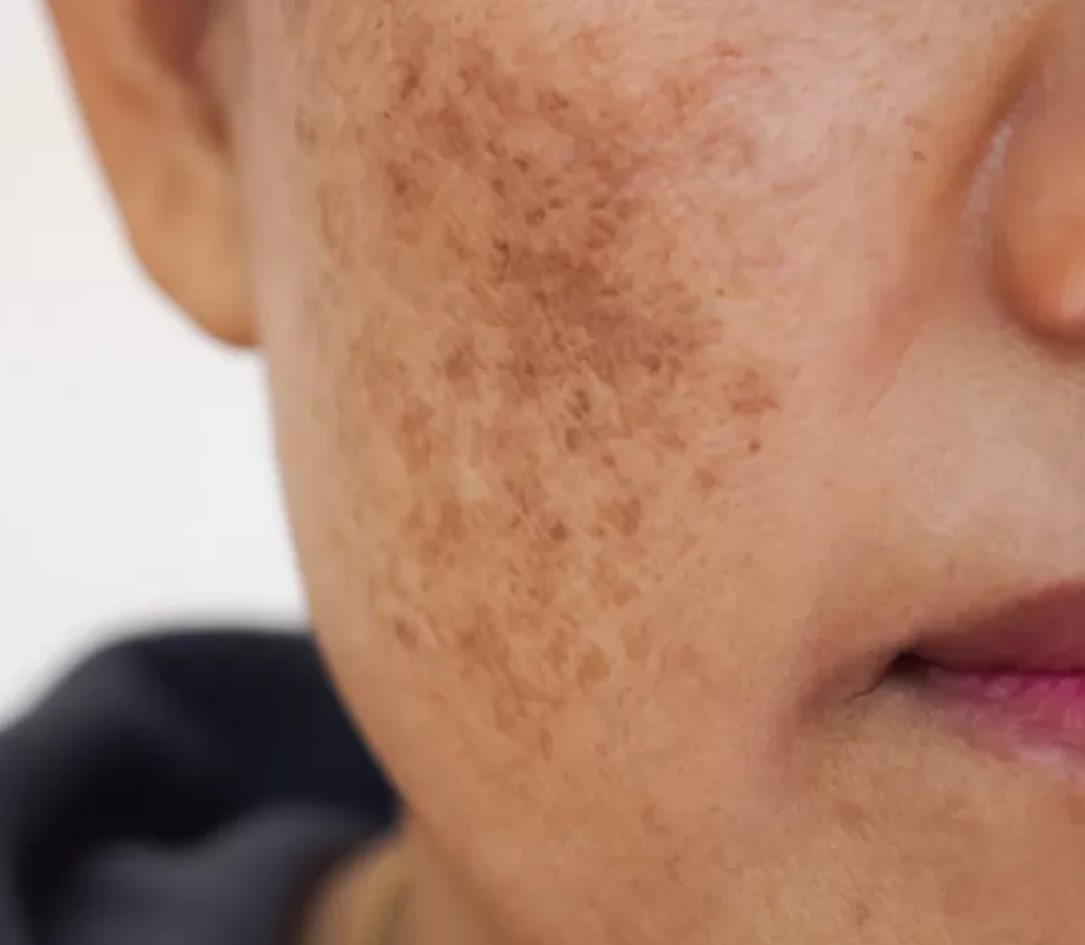Age spots, also known as liver spots or solar lentigines, are flat, brown, gray, or black spots that typically develop on sun-exposed areas of the skin. They are associated with aging and are more common in adults over the age of 50, although they can occur in younger individuals as well. Age spots are not harmful and are generally benign, but they can be cosmetically bothersome to some people.
The primary cause of age spots is prolonged exposure to ultraviolet (UV) rays from the sun. Over time, the sun’s UV rays can accelerate the production of melanin, the pigment responsible for skin color, leading to the formation of these pigmented spots. Other factors that may contribute to the development of age spots include tanning beds and exposure to environmental pollutants.
Key characteristics of age spots include:
-
Appearance: Age spots are usually flat, oval, or round in shape and can vary in size. They are typically tan, brown, or black in color.
-
Location: They often appear on areas of the skin that receive the most sun exposure, such as the face, hands, shoulders, and arms.
-
Texture: Age spots are generally not raised or textured; they are smooth to the touch.
While age spots are harmless, individuals concerned about their appearance may explore various treatment options, including:
-
Topical Treatments: Over-the-counter or prescription creams containing ingredients like hydroquinone, retinoids, or alpha hydroxy acids may help lighten age spots.
-
Laser Therapy: Lasers or intense pulsed light (IPL) devices can target pigmented cells, breaking down the melanin and reducing the appearance of age spots.
-
Chemical Peels: Chemical peels involve the application of a chemical solution to the skin, which exfoliates the outer layer, leading to improved pigmentation.
-
Plasma: Our plasma pen device easily removes age spots and other unwanted lesions such as moles and skin tags.
It’s important to note that prevention is key when it comes to age spots. Protecting the skin from UV radiation by using sunscreen, wearing protective clothing, and avoiding excessive sun exposure can help reduce the risk of developing age spots and other sun-related skin issues. If you have concerns about age spots or changes in your skin, it’s advisable to consult with a dermatologist for proper evaluation and guidance.
- Book Appointment (free consultations)
- Contact us by phone/text: 952-212-1268
- Follow us: Facebook and Instagram

